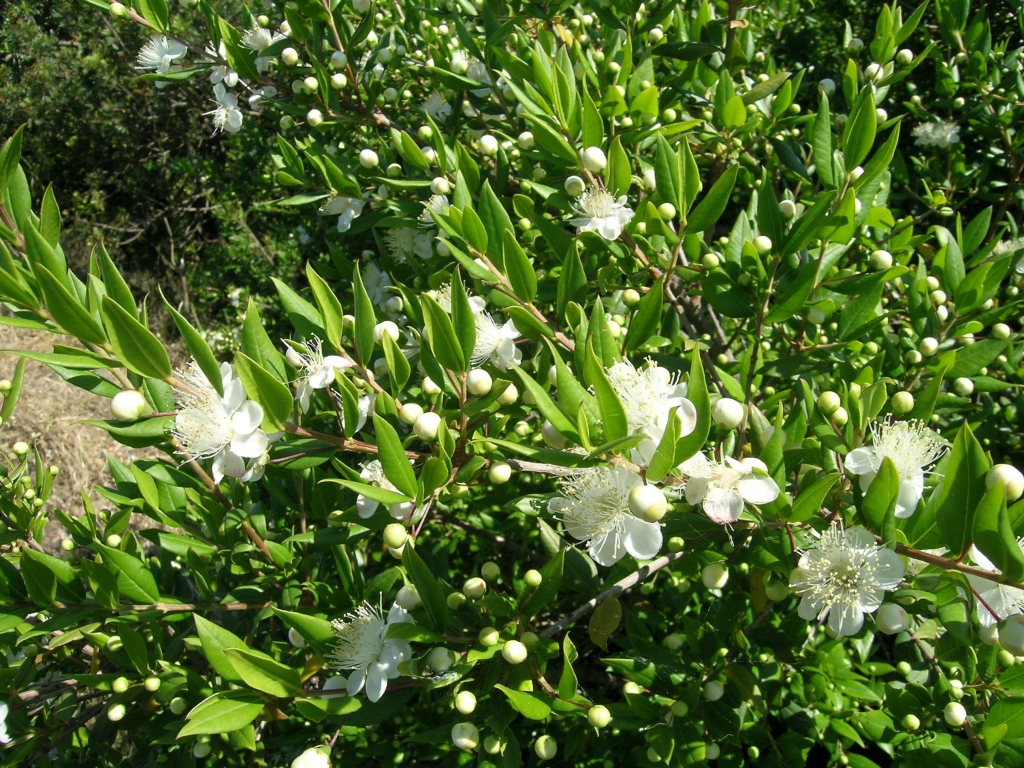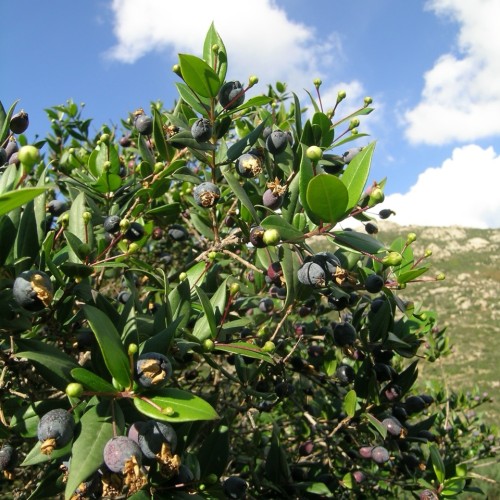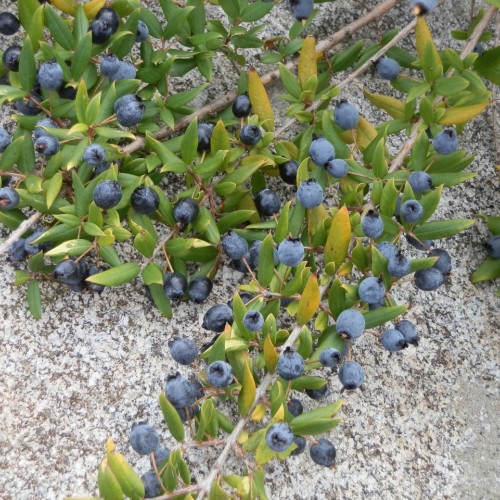
Myrtle is a plant rooted in classical antiquity, playing an important role in the history and legends of Mediterranean peoples. In ancient times, myrtle was sacred to the Persians, who used its timber for sacrificial fires, while the ancient Hebrews considered it a symbol of peace and, in Greek and Roman mythology, it was sacred to Venus and came to symbolise beauty, love and pagan happiness. In these civilisations, crowns made from its leaves were worn by magistrates, winning athletes, poets and comedy writers. Myrtle flowers are traditionally used in wedding arrangements. The plant's timber is heavy and hard and can be used for making turned wooden objects, handles and walking sticks.
Younger branches, being slim and flexible, were used to make baskets or to cover demijohns. Myrtle can be combined with holm oak, lentisk, heather and arbutus for producing charcoal and firewood. From a medicinal perspective, this plant can be used for balsamic, astringent, antiseptic and decongestant purposes thanks to its content of essential oils and aromatic substances. On Capraia, a decoction of its leaves was used to make cooling and emollient compresses for skin lesions from chickenpox. A decoction of its leaves was also used in folk medicine as a mouthwash for toothache, and the leaves were crushed and chewed as an antiseptic for the gums. In cosmetics, its oil has always been used to make soaps, perfumes and other cosmetics, and its leaves and flowers produce an essence known as 'water of the angels', a toning lotion for the skin.
On Elba, in the Rio Marina area, fresh leaves of mortella, the local name for this plant, were placed inside socks to prevent excessive sweating and foot odour. When it comes to food, myrtle leaves are used to flavour meat and fish, and the berries are also used to season roasts and aromatise wine. On the islands of the Tuscan Archipelago and in the nearby mainland area of Maremma, these fruits are used to make a traditional liquor with a dark red colour. Myrtle flowers are also popular with bees for their pollen. And lest we forget the ornamental value of this plant in beautiful Mediterranean gardens.



